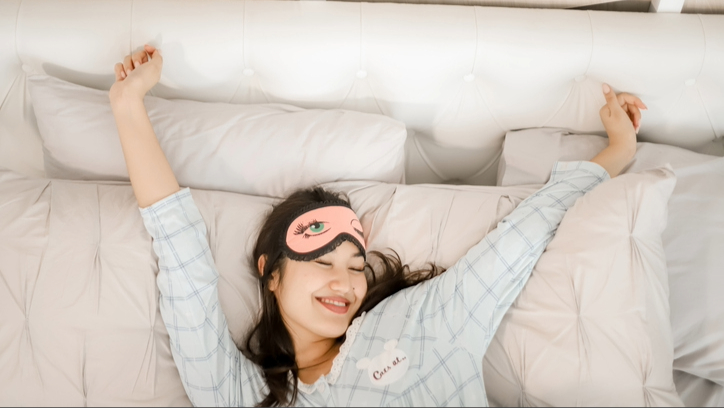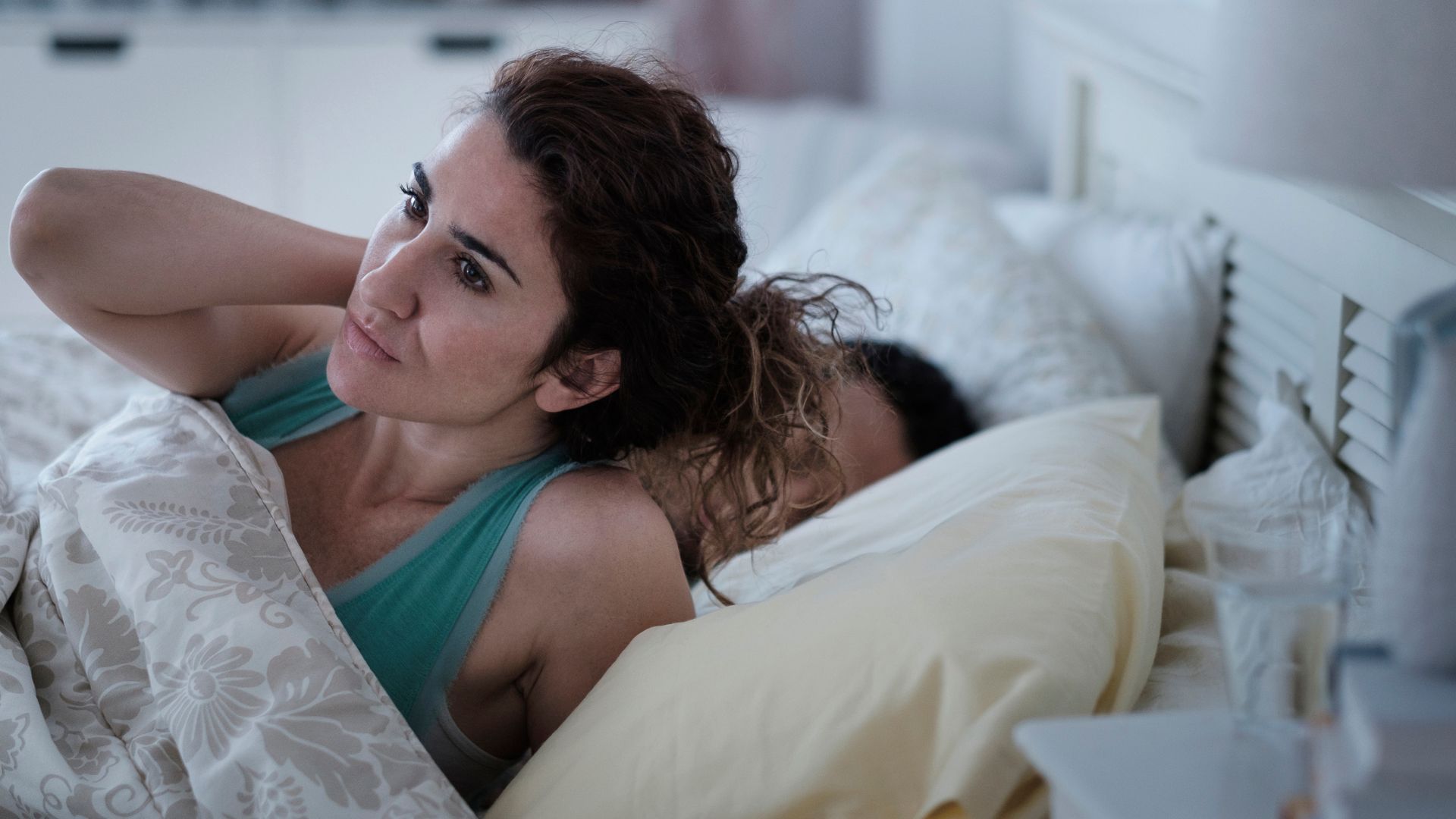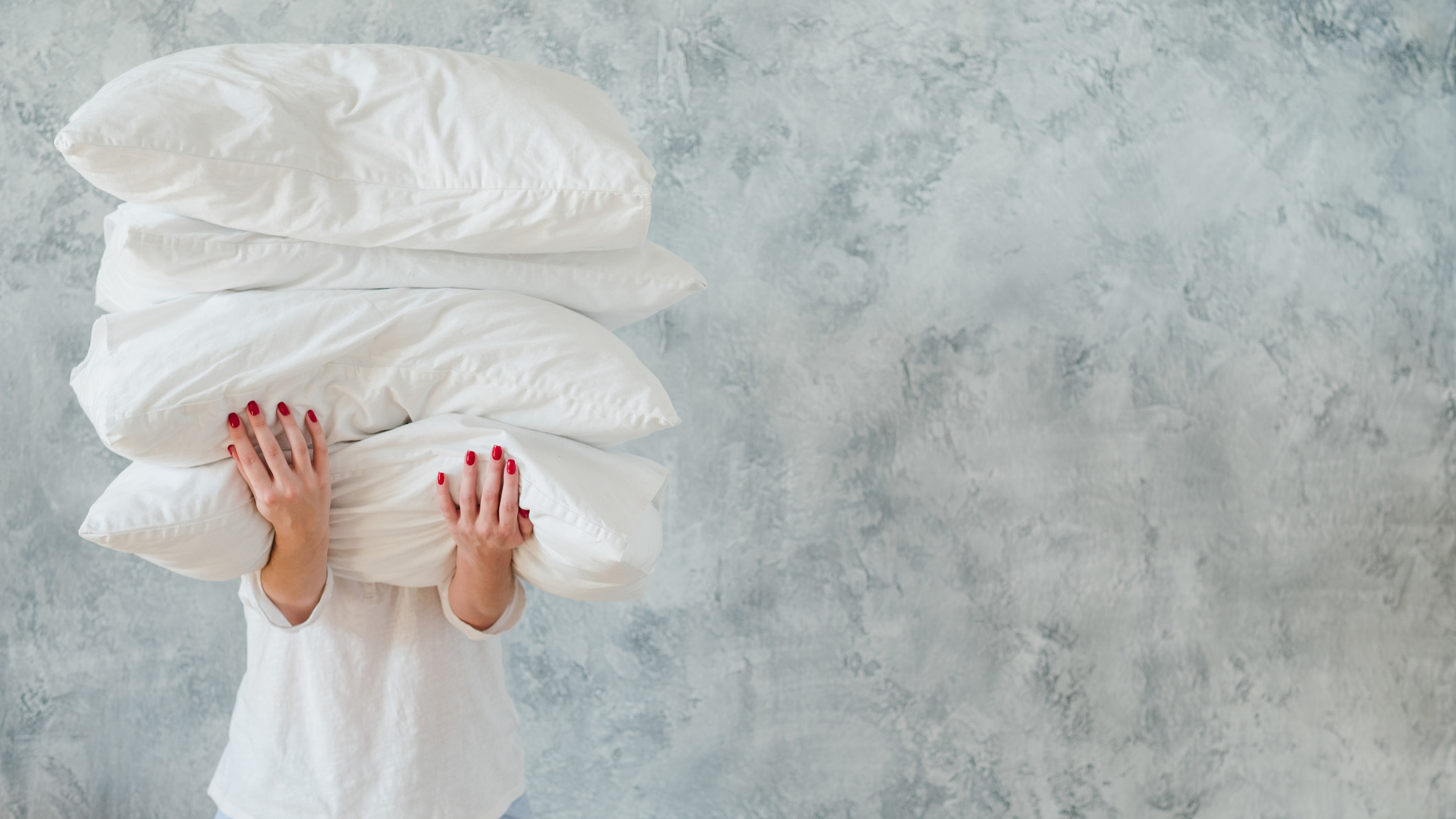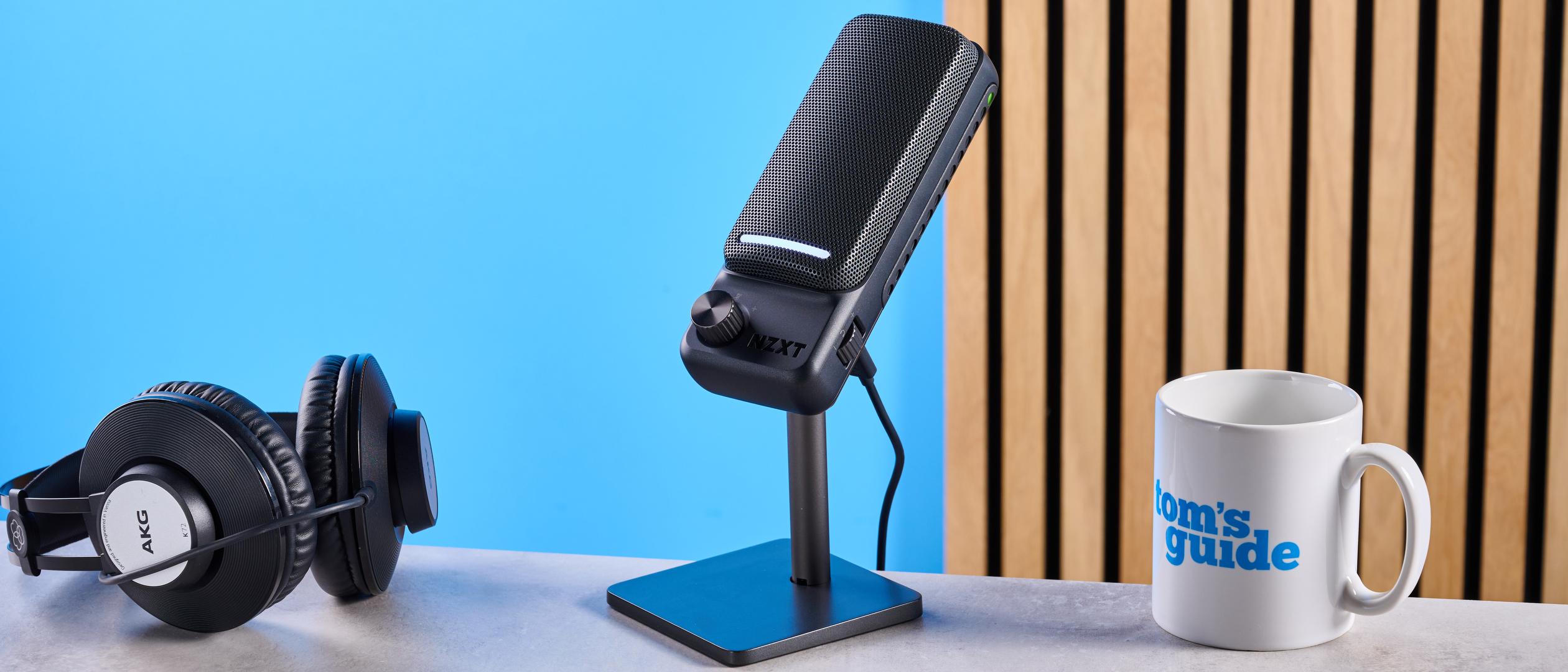New study reveals Gen Z likes to sleep with 7 pillows — here's why that's bad news for your neck
Yes, we said seven pillows

We all love a comfy pillow or two for a cozy, restorative night’s sleep. However, a recent UK survey reveals that Gen Z like to sleep with seven pillows. Yes, seven.
While the best pillows for all sleepers are guaranteed to give a good night’s rest, how many pillows are too many? To find out if Gen Z could be on to something, we reached out to Dr Leah Kaylor, clinical psychologist specialising in sleep and trauma, to understand if there’s any actual benefits to sleeping on 7 pillows.
If you're intrigued to try, we've also included advice on stacking the pillows the right way to avoid ruining both your sleep and posture. Plus, if you are shopping for a new pillow (or seven), we've rounded up the best early deals in this year’s Presidents’ Day Bedding sales.
New study reveals Gen Z’s pillow stacking habit
The sleep habits study, conducted by UK department store M&S, revealed that 18- 24 year olds opt for up to seven pillows. Another key takeaway from the survey is that approximately 60% of Brits make their bed daily with Yorkshire emerging to be the tidiest (67%).
“Taking a few moments each morning to make your bed can set a positive tone for the day. It creates a welcoming space to return to and promotes a sense of calm and order,” says Karen Thomas, Head of Homeware Design at M&S.
The survey also looked into people’s preferences of the other factors which contribute to quality slumber like minimal noise, complete darkness, comfortable nightwear and room temperature control. The report also found that around 52% of Brits get the recommended 7 to 8 hours of sleep while 6% of 18-24 year olds and senior adults (over 65 years) admitted to resorting to less than 5 hours of sleep.

Are there any benefits to sleeping with seven pillows?
Even though sleeping on 7 pillows might sound like a dream, it doesn't really contribute to improving your sleep quality in any way, according to experts.
“Generally, most people benefit from no more than 3 pillows in strategic positions to support the body while sleeping. Seven pillows is excessive which can put the body into awkward positions leading to pain,” says Dr Kaylor.
Are there any benefits to this at all? According to Dr Kaylor, this trend could be strongly linked to psychological and emotional comfort needs rather than physical support. This “nesting behaviour” reflects the need to create a comfortable sleeping space, aligning with the current importance placed on self care and relaxation.
Sign up to get the BEST of Tom's Guide direct to your inbox.
Get instant access to breaking news, the hottest reviews, great deals and helpful tips.
“With the state of the world, people are experiencing high levels of stress and anxiety. Having multiple pillows may serve as a form of emotional comfort, similar to that of a stuffed animal providing a sense of much-needed security and safety,” she explains.

What are the health implications of sleeping with too many pillows?
Using too many pillows can strain your neck muscles and cause misalignment based on how they are propped up under the head, resulting in neck pains and shoulder aches in the morning. "Excessive pillows can push the head forward (if sleeping on back) or tilt the head too much to one side (if sleeping on side). Both of these situations can lead to neck and upper back pain," says Dr Kaylor.
This can also significantly impact your sleep quality as too many pillows will trap heat, resulting in night-sweats or stuffiness. Your attempts to find the right position might also lead to frequent nighttime wakings
How many pillows should you sleep with?
Experts recommend sleeping with one to two pillows; one for head support and another for the body, to achieve a good night's rest. "You could opt for a second pillow between the knees for side sleepers and a small lumbar or wedge pillow for back pain relief," adds Dr Kaylor. However, the number of pillows you should sleep with also largely depends on your sleeping position:
- Side sleepers need a firm high loft pillow to fill the gap between the ears and shoulders. A knee pillow will also help relive pressure and maintain spinal alignment when lying on the side.
- Back sleeping requires a flatter medium to soft pillow to prevent your head from tilting forward.
- A low loft soft pillow suits stomach sleepers. They are also advised to refrain from stacking up pillows as this can cause severe neck strain.

How to stack your pillows for a comfy night’s sleep
Stacking pillows can either support proper spinal alignment or completely throw it off. More pillows don’t always mean better sleep—proper placement and spinal alignment are what truly matter. However, if you're someone who cannot hit the snooze button without propping up multiple pillows, it's important that you do it the right way that does not ruin your sleep posture and cause neck and back aches.
Back sleepers can rely on a single supportive pillow under your head and another thinner one under your knees to reduce lower back strain. When stacking pillows, side sleepers on the other hand should use one to sleep on, a thinner second one to fine-tune the height and another between the knees to prevent hip misalignment.
As we mentioned, this is a trend we think stomach sleepers should skip. "Stacking pillows under your head is a big no-go for stomach sleeping, as it hyperextends the neck. Instead, use a very thin pillow or none at all under your head and place a pillow under your pelvis to prevent lower back strain," says Dr Kaylor.

Becky is a Sleep Staff Writer at Tom’s Guide covering all things sleep-related including product reviews, research studies, news and explainers. She works on specialist bedding content and is responsible for buyer’s guides like the best pillows for all sleepers and best mattress protectors focusing on popular brands such as Tempur-Pedic, Avocado, Coop Home Goods and more. Becky is a PPA accredited journalist who is keen to explore the intricacies of sleep, its effects on skincare, mental wellbeing and work performance. While not thinking of sleep, she can be seen reading in cosy bookshops or learning about global food culture.
